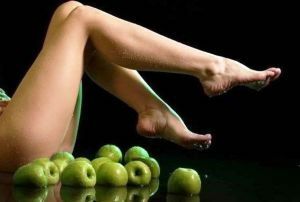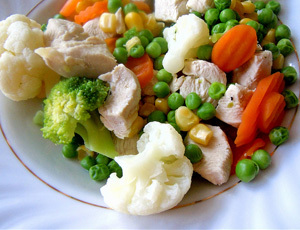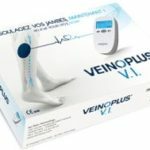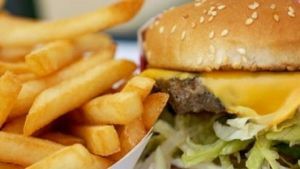 Thrombophlebitis is one of the most common diseases, which every year amazes an increasing number of people.
Thrombophlebitis is one of the most common diseases, which every year amazes an increasing number of people.
The disease represents the pathology of the vessels, which is reflected by as an inflammatory process in the vein and the formation of a thrombus closing the lumen of the vessel.
A thrombus is a blood clot formed in a vessel. Such clots clog the blood vessels, thereby disrupting the circulation. The biggest danger lies in the fact that the thrombus can come off the venous wall and, together with the blood stream, get into the vessels of other organs.
There are 3 types of disease:
- acute;
- chronic;
- subacute.
Most often, the lower limbs of a person are affected, this disease is accompanied by varicose veins. If you do not treat thrombophlebitis and do not follow a diet, then the disease can progress, which threatens with serious complications.
For effective treatment of the disease, special attention should be paid to your diet.
What should include a diet for thrombophlebitis and what nutrition is considered correct in this disease.
Contents
- Products Thinning and thickening blood
- General food recommendations
- Undesirable products in case of
- disease Blood thinning products
- Conclusions
Blood thinning and thickening blood
There are various groups of products, one of which contributes to the dilution of blood, while others produce the oppositeeffect - thicken the blood.
People with thrombophlebitis should know what foods are in one or another category in order to, if possible, reduce or increase the consumption of certain foods.
It is useful to know this and for the prevention of thrombophlebitis, because everyone knows that the disease is easier to prevent than treat, especially in a neglected state.
Blood thinning causes natural products, some of which completely replace aspirin, since they have the same effect. As an example, you can bring raspberry jam, a few spoons, which in their action are equal to one tablet of aspirin.
Olive oil, linseed oil, fish products, including fish oil, products containing magnesium-oat  cereals, oatmeal, ginger, oatmeal, as well as figs, artichokes, berries, etc., are well liquefied by the .
cereals, oatmeal, ginger, oatmeal, as well as figs, artichokes, berries, etc., are well liquefied by the .
Also here,garlic, the regular use of which resolves already formed thrombi.
The following products of have a thickening effect: sugar, potatoes, mango, bananas, dogrose, walnuts, lentils, chokeberry, aronia, pomegranate juice.
General recommendations for nutrition
Diet and rational nutrition contribute to the normalization of blood circulation and vascular strengthening, while preventing deposits on the walls of veins.
According to doctors and nutritionists, each person should know what foods are related to blood thinners, and which to thickening to be able to regulate blood circulation.
In thrombophlebitis, it is recommended to hang up in a conspicuous place a list of products that are thinning and thickening the blood, which will make up a personal diet.
It will also help to adhere to the prescribed prescriptions when preparing the menu for the day and purchasing provisions.
Dysfunction of the liver is one of the prerequisites for the development of this disease, therefore it is important to set up the work of this body in time.
This body is responsible for the process of metabolism throughout the body, it is a chemical mini-laboratory, the liver produces special substances that prevent blood clots and blood clots. A healthy liver in no case will allow thrombosis.
Gentle mode for the liver in this disease involves limiting the consumption of fats, smoked products, pickles, canned foods, sausages, white bread.
Another important point - overweight accelerates the development of the disease, since a large amount of man exerts pressure on the vessels of the lower extremities, the venous walls experience excessive pressure. Therefore, another recommendation is a low-calorie diet, which allows you to avoid extra pounds.
You need to eat often and in batches, that is, at least five times a day, using small portions and drinking plenty of fluids during the day( see the next section of this article).
 Neuromuscular electrostimulator Veinoplus is used for varicose veins and other vascular diseases. You can find out more details in our material.
Neuromuscular electrostimulator Veinoplus is used for varicose veins and other vascular diseases. You can find out more details in our material.
Treatment of varicose veins using the method of phlebosclerosis - the pros and cons of the procedure, preparation and other necessary information.
Undesirable products in the case of
Diet in thrombophlebitis of the lower extremities should primarily exclude foods that contain vitamin K. This vitamin neutralizes the effect of anticoagulants and increases blood coagulability.
Such products include:
- pork liver;
- black currant;
- soy products;
- beans;
- cabbage;
- watercress;
- spinach;
- broccoli;
- green peas;
- beans;
- bananas.
Negative effects on the walls of the vessels have products that participate in thrombosis. It is necessary to reduce the use of carbohydrates and fats, namely:
- meat;

- strong broth;
- of walnuts;
- sausages;
- baking;
- confectionery;
- canned food.
The restriction applies to the consumption of salt, sugar, sour cream and butter.
Blood thinning products
The basis of the human ration with thrombophlebitis should be food that is of vegetable origin - fruits, vegetables, greens and cereals. Meat is better to buy low-fat varieties, and ideally to replace seafood.
One of the indispensable products is beef liver, hardening vessels.
It is useful to use different types of cereals: buckwheat, oatmeal or oatmeal. It is necessary to eat foods that dilute blood - garlic, onions, citrus fruits, ginger, red currants, pineapples, melons, cinnamon. Preferably include in the diet and dairy products.
Products are best processed in a gentle manner, that is, to exclude frying, smoking, salting. Use such modes as cooking, quenching or steaming.
In order to make up for the loss of fluid, you should not drink soda, coffee or strong tea, but natural juices, green tea, compotes or fruit drinks. The first can provoke fluid retention in the body. Many experts advise to drink invigorating ginger tea.
Well helps with thrombophlebitis nettle infusion: 250 ml boiling water 2 tablespoons nettle leaves.
Conclusions
 Thus, we examined the main points that you need to know about nutrition and diet for thrombophlebitis and varicose veins.
Thus, we examined the main points that you need to know about nutrition and diet for thrombophlebitis and varicose veins.
Special mention should be made of this point - the diet for this disease is only one part of the treatment, do not neglect the visit to the doctor who will prescribe a comprehensive treatment of the disease on the basis of medical analyzes of a particular patient.
Diet is an important part of the treatment that must be followed in order to prevent the disease or its complications , while not forgetting about other types of treatment. These recommendations for proper nutrition are not particularly stringent, they are easy to perform, and the result will not be long in coming.
Be attentive to your health!
